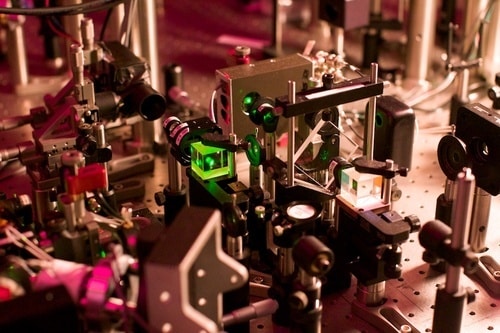Freescale is planning to use the same trick, but you won’t find its asymmetrical CPUs in your next tablet or smartphone, which marries a Cortex M4 to a Cortex A5, isn’t meant to compete with the latest Snapdragon and the two ARM cores are analog-to-digital converters, digital-to-analog converters, programmable timers, on-chip memory, flexible memory interfaces, high-speed communication interfaces and security. These chips will find homes in factories and in-dash infotainment systems which have increasingly sophisticated UIs, software development tools will land before this quarter is out and the first batch of silicon will be announced in Q1 of 2012………………
Freescale Semiconductor announced a new product platform that incorporates a high-performance microcontroller (MCU) and an energy-efficient applications processor, along with extensive enablement to help designers meet aggressive market windows. This asymmetrical-multiprocessing-architecture platform incorporates an ARM Cortex-M4 microcontroller and a Cortex-A5 processor to enable simultaneous real-time control, graphics-rich apps processing and flexible connectivity options. “With this platform, Freescale is dramatically simplifying the development challenge of adding applications processing to a system designed for real-time control,” said Reza Kazerounian, senior vice president and general manager of Freescale’s Microcontroller Solutions Group. “We’re the first to provide extensive MCU and apps processing capabilities in an integrated hardware-software based solution, setting a new standard for the design of systems that need rich apps in real time.” Supporting the two ARM cores and leveraging Freescale‘s expertise in extreme integration, the product platform offers a host of peripherals. These include, but are not limited to, analog-to-digital converters, digital-to-analog converters, programmable timers, on-chip memory, flexible memory interfaces, high-speed communication interfaces and security. The new product platform will be the foundation of a family of embedded microprocessors (eMPUs) that, along with Kinetis MCUs and i.MX applications processors, gives Freescale an unparalleled breadth of solutions based on the ARM architecture. Silicon is only part of the solution Freescale is bringing to the market with the new platform. On top of the hardware product platform, Freescale will provide an inter-process communication (IPC) application programming interface (API). Customers will be able to use the hardware and IPC API to create differentiated applications without worrying about how the high-level OS (like Linux) and RTOS (such as MQX) communicate with each other. Freescale is designing solutions that support multiple operating systems, as well as reference designs for industrial applications. All of this enablement is backed by on-demand field support.
In addition, Freescale plans to introduce a software development platform several months before the arrival of silicon. This approach can significantly reduce industrial customers’ software development cycle time and help them meet market windows with their applications. It also will allow them to develop future versions of their products with fewer resources and investment required. “Industrial applications like factory automation, medical devices and appliances are starting to incorporate more connectivity and sophisticated GUIs to give end users a simpler, safer and more consumer-like experience. Adding these features to a real-time system has traditionally been done by adding an applications processor on top of a real-time controller, which can be a real challenge for industrial system developers,” said Tony Massimini, chief of technology for Semico Research. “Freescale is taking a unique approach with a new product platform that merges an apps processor and real-time controller into one device to reduce complexity and cost, combined with a ‘software before silicon’ strategy for earlier software development.” Freescale led the market with the introduction of the broadest portfolio of MCUs based on the ARM Cortex-M4 MCU core; its award-winning Kinetis MCU line is currently in production. Freescale is adding the ARM Cortex-A5 core to its broad portfolio of ARM solutions. Freescale plans to offer the initial software development platform for its new product platform later this quarter and intends to announce the first industrial-focused eMPU product families based on the new architecture in Q1 2012. Derivatives of the new platform are planned for the automotive infotainment market. Automotive device details will be announced in Q2 2012. Industrial systems are becoming more complex, with increasing needs for sophisticated human-machine interfaces (HMIs), connectivity options and compliance with safety standards, all while operating consistently and predictably as they execute tasks. Different computing paradigms are needed to provide HMI functionality and deterministic, real-time control. Application developers face the challenge of seamlessly integrating these diverse technologies in a single system. Processing for HMI is focused on efficiently processing pixels and displaying them on a screen, while guaranteed determinism requires highly predictable response times for tasks. The solutions available until now have focused on one or the other of these processing needs. As a result, application developers have taken on the burden of creating a full solution by combining different pieces of silicon and developing software to enable real-time control and HMI solutions that work together. This requires extensive R&D effort and ties up resources that could be focused on differentiating their product offerings.
[ttjad keyword=”processor”]





Thanks for ripping off my image. http://www.engadget.com/2011/10/20/arm-unveils-cortex-a7-processor-big-little-computing/